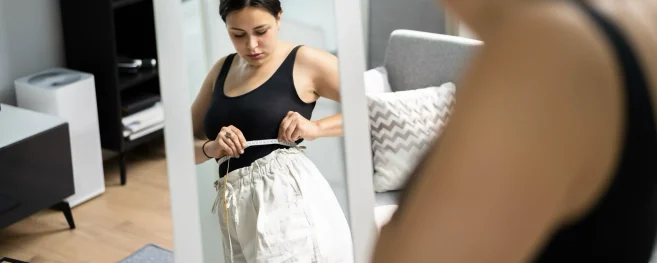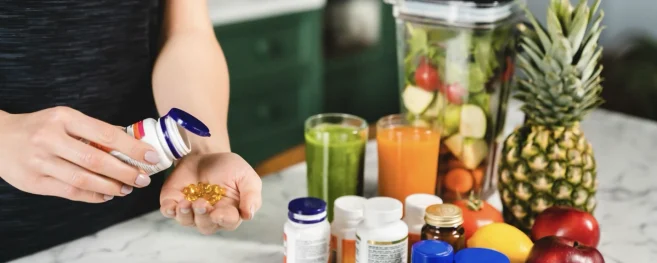MASTERY OF THE LAPBAND
< Patients that experience frequent sticking and vomiting despite the Lapband being not too tight have not mastered the proper eating techniques, and some of these patients will go on to pouch dilatation or a slip, requiring either revision, replacement or a conversion to a different procedure.
Myth #3. The Lapband requires too many adjustments. The surgeons at Tristate Bariatrics are all trained to perform adjustments during the surgery to implant the Lapband so that the number ofp>The Lapband is a safe and effective tool for weight loss. We continue to offer it as one of our surgical weight loss options. After its approval by the FDA in 2001, there was a tremendous increase in interest and acceptance by both surgeons and patients due to its safety profile. Compared to the gastric bypass 10 years ago, the Lapband was much safer and appeared to offer an effective, reversible, and adjustable alternative to the gastric bypass. There has been a quite a bit of negativism towards the Lapband in the bariatric surgery community as well as in chat rooms and blogs on the Internet. I believe much of that negativity stems from a combination of bariatric programs not being knowledgeable enough about the proper use of the Lapband to effectively help the patients and also many patients not ever having mastered the proper use of the Lapband. I have personally performed over 2,000 Lapband surgeries, and feel qualified to comment on my observations. I would like to point out some myths and truths about the Lapband. For those of you contemplating surgery, hopefully this article will help you make an informed decision if choosing the Lapband as your surgical weight loss solution. For those of you that have already had the Lapband surgery, I hope this article will help you in achieving mastery of the Lapband, which is a requirement for success with the Lapband.
Myth #1. The Lapband is a restrictive procedure. Although the Lapband does restrict one’s ability to consume a variety of foods, it does not have the ability to differentiate “good” from the “bad” when it comes to food choices. Some “good” foods can pose difficulty for patients with a properly adjusted band, such as dry chicken or raw hard vegetables. Some “bad” foods, such as chips, pretzels, cookies, and ice cream will pass through the band much easier than some “good” foods. The real mechanism of the Lapband’s effectiveness is in its ability to reduce a sense of hunger, thereby empowering the patient to make the appropriate food choices. Without making the correct food choices, the patient will be doomed to failure. The Lapband should be viewed as primarily a hunger control procedure, not a restrictive procedure.
Myth #2. All successful Lapband patients frequently have sticking and vomiting and this is expected to occur for all patients. The Lapband is a physical device with undeniable restrictive properties. However, the restriction is really an undesirable side effect, as opposed to being the desired effect. We attempt to teach our patients the proper eating techniques to allow them to be able to enjoy a healthy meal consisting of lean proteins, such as egg whites, skinless chicken, turkey, fish, and shellfish, and vegetables, such as fresh salads, steamed or raw vegetables, and one serving of fresh fruit daily. The mastery of proper eating techniques to be able to eat with the properly adjusted Lapband is not easy, but once achieved, the patient can experience great success, as long as the food choices are correct. To make life easier for the weight-loss surgery patient, we recommend protein drinks that have at least 15 grams of protein, while having less than 110 calories per serving to replace one, preferably two of your meals. subsequent adjustments is minimized. We will fill the band to what we think is near the “green zone” as we visualize the contact of the Lapband to the stomach. Our clinical staff then will assess the progress of weight loss with each patient individually and decide upon when to offer a fill. The typical number of fills for optimal weight loss ranges from between 3-6 fills at increments of 0.25 or 0.5 cc’s of fluid. We have found that patients that require more adjustments, both to increase and decrease fills are generally not in complete control of their food choices and their weight loss, so they try to relegate the responsibility to the Lapband, looking for a tighter Lapband to achieve weight loss, instead of accepting full responsibility in regards to food choices. This invariably results in multiple fills, unfills, and not much progress with weight loss. So this myth does apply to those not using the Lapband properly. For those that have accepted responsibility for their weight loss by making mindful decisions in regards to their food consumption, the Lapband requires only several adjustments, as the fat pad within the Lapband shrinks with ongoing weight loss, while the hunger center in the brain (hypothalamus) is also screaming “eat!” We have had a number of patients requiring no adjustment after surgeries that have gone on to achieve and sustain significant weight loss.
Myth #4. The Lapband does not work. For patients that have the Lapband that say this, or even other doctors, for that matter, I must disagree wholeheartedly. I have personally witnessed over a thousand patients that have effectively used this surgical tool to achieve substantial weight loss and to maintain that weight loss. Our own practice statistics show that the average Lapband patient loses approximately 40-45% of his or her excess weight in 1 year. Many patients that continue to follow-up on a regular basis with our program will be able to either maintain that weight loss or even show greater weight loss over time. When it is claimed that it does not work, I first look to determine if there has been the development of a large pouch or a hiatal hernia that interferes with our ability to adjust the Lapband properly to the “Green Zone” to effectively curb physical hunger. If this problem exists, I may recommend a revisional surgery to either fix the problem or to convert to either a sleeve gastrectomy or a gastric bypass. If such a problem is not identified, then I look to the patient’s food choices, and most of the time, I find that the patient has reverted back to consuming carbs and sugars. Patients that cannot refrain from carbs and sugars will have a difficult time losing weight with any of the other surgeries. I will also try to find out if the patient’s eating technique has been mastered, and if not, will try to help the patient to develop greater mastery before offering another surgery.
Now I would like to share with you some truths about the Lapband.
Truth #1. Lapband is an effective tool for losing weight and keeping the weight off. The average Lapband patient can expect to lose 40-45% of their excess weight within about a year, and then maintain most of that weight loss over the long term. There is currently no evidence that any other treatments including diet pills, diet supplements, Weight Watchers, Nutrisystems, Medifast, or Optifast, or any other medication, diet and/or exercise program that has shown effective long-term success to the degree that weight loss surgeries have achieved. If any patient can lose 40% of their excess weight and keep it off long-term, I view that as a tremendous success. Therefore, if our average patient is showing this degree of weight loss, which implies that at least a half of our Lapband patients have been successful, I maintain that the Lapband is an effective tool for losing weight and keeping the weight off. We have had many patients that initially excelled in their weight loss that for a variety of reasons had the band deflated, either purposely due to pouch or esophageal dilatation, or unknowingly due to a leak, and just about all of these patients regained significant weight. This observation has led me to believe that there are real mechanisms of action that we do not fully understand about the effect of the Lapband on the hunger center in the brain (hypothalamus) that controls one’s appetite and ability to choose foods. I have personally witnessed patients going from total control and discipline in regards to choosing the correct foods with a properly adjusted Lapband to total lack of control and discipline with a deflated or leaking Lapband.
Truth #2. The Lapband imposes significant challenges in regards to eating and drinking. Of all the weight loss surgeries, the Lapband imposes the greatest challenges to patients when it comes to proper eating technique. Because it is a foreign object placed around a critical part of the upper digestive tract, it will impose definite limits on what and how one eats. A patient with a Lapband must not only decrease the quantity of food consumed at one meal, but must also slow down significantly. We recommend a 6 oz. meal consisting of 3 oz. of lean protein with 3 oz. of vegetables to be consumed over a 30-minute period of time, or at a maximum rate of 1 oz. of food over 5 minutes. In addition to this speed limit imposed on food, I have found out over the years that patients with the Lapband should also limit the rate of fluid consumption. I have seen about 10% of our Lapband patients develop stretching of their esophagus. After careful questioning and studying this group of patients, I have found that the common denominator was that they all had a tendency to drink fluids fast. Therefore, we have been recommending a speed limit of 1 oz. of fluid in 5 minutes, or up to 12 oz. per hour of fluids. We recommend that our Lapband patients drink continually throughout the day to get enough fluids in while not stretching the esophagus by drinking fast. Drinking fast can result in stretch of the esophagus, which will lead to decreased muscle tone of the esophagus, which, in turn, lead to difficulty handling foods.
Truth #3. The Lapband can help a person lose all of his or her excess weight. Although our average Lapband patient achieves between 40-45% Excess Weight Loss (EWL), we have a number of exceptional patients that have far exceeded these averages and some that have lost their entire excess weight. If you ask these patients how they did it, their answers are uniformly the same. They kept themselves on a very-low to low calorie diet with the right amount of lean proteins and vegetables, with some fruit, while increasing their physical activity to get into better shape with greater cardiovascular endurance, greater strength and muscle tone, and greater fitness in general. In other words, these patients used the Lapband to help them make the necessary changes in their diets and lifestyle. They never relegated the responsibility of weight loss to the Lapband. They always remained in total charge of the weight loss. The Lapband kept their hunger at bay, but did not tell them what they should or should not eat.
Truth #4. The mastery of the proper use of the Lapband is the key to success. First, the Lapband patient must only ask of the Lapband what it is capable of doing for you. The Lapband should be viewed primarily as a hunger-reducing tool, a device that can help you feel “not hungry” for several hours at a time. You should not look to the Lapband to make you feel “full” but rather you should ask the Lapband to help you feel “satisfied” with a small meal. If you seek to feel “full” with a meal, the most common result is that you will begin to use the esophagus as a substitute stomach and fill it with food above the Lapband to get that feeling. This will lead to esophageal dilatation and ineffective motor function of the esophagus, not to mention regurgitation, vomiting, and aspiration at night while sleeping. Second, the successful Lapband patient must learn to process food properly on the plate and in the mouth, and deliver the food to the band very slowly, allowing sufficient time for that small amount of food to go through the band before having any more bites. The greater the mastery of proper eating techniques, there is greater likelihood of achieving the “Green Zone,” a level of adjustment of the Lapband at which you will not be hungry, be able to eat small appropriate healthy meals and be satisfied, and you will not experience sticking, vomiting, regurgitation, or reflux. Third, mastery of the proper method of keeping yourself hydrated throughout the day will not only help with hunger control, weight loss, and being healthier, but also will help you avoid the complication of esophageal dilatation, or stretching out your esophagus. We recommend drinking continually at a slow rate of up to 12 oz. per hour. We have observed that patients that habitually chug a large volume of fluids will develop stretching of the esophagus, forcing us to deflate the band. While this deflation is essential to allow for the esophagus to shrink back down, the deflation invariably will lead to increased hunger, which in turn leads to weight gain. Last, the most important element of mastering the Lapband has to do with making correct choices of foods and drinks to minimize carbs and sugars, while getting enough protein, fiber, vitamins and minerals from appropriate protein and supplemental products, and natural food sources of lean proteins, vegetables, and fruits. Mastery of anything takes time and great effort. Our entire clinical staff is here to teach you how to master the Lapband and to encourage you throughout your weight loss journey.












